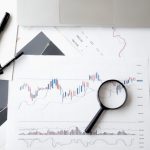Mergers and acquisitions (M&A) typically make headlines, as they are typically very significant events in the investing market. Think Twitter, in the recent purchase by Elon Musk.
But what exactly are mergers and acquisitions?
Mergers and acquisitions, or M&A, are a common way for companies to grow. It is when two companies combine in some way. A buyer can either buy another company, or be bought by another company.
There are several types of M&As depending on who the buyer and seller are, and what they are buying.
In this article, we will discuss all the general details about mergers and acquisitions, their benefits to companies, and how they affect shareholders.
What are mergers and acquisitions (M&A)?
Mergers and acquisitions, or M&A, are when two companies combine. This means consolidating businesses or their primary assets through monetary transactions between corporations is what it usually entails.
Companies can acquire and absorb one another through outright purchases, mergers, acquisitions of important assets, tender offers, hostile takeovers, and so on. Merger and acquisition actions encompass them all.
The departments of banks that facilitate mergers and acquisitions are often commonly referred to by the acronym M&A.
It can be a great way for companies to grow by combining their resources and expanding their market share.
Many large corporations have been built through mergers and acquisitions. But there are also many examples of failed M&A attempts–including some that have cost shareholders billions of dollars in losses.
Mergers and acquisitions are often used interchangeably, but there is a difference between them. A merger occurs when two companies join forces and become one entity.
The acquirer buys the target company, which means it is the buyer that controls all aspects of the transaction and future decisions. An acquisition involves one company purchasing another firm outright—this means that both parties are involved in creating and executing deals together.
The key details and differences are discussed below.
What is an acquisition?
An acquisition occurs when one corporation purchases and replaces another as the legal owner.
An acquisition is a type of merger in which one company buys another company. The buyer is called the acquirer, and the target is called being acquired by another firm.
The assets and operations of the target company are transferred to its new owner—in other words, it is like buying something from someone else but with more legal paperwork involved.
The process can take many months before completion due to regulatory requirements such as antitrust or anti-bribery laws.
If there are any issues during this time period, they will likely have to be resolved before closing can occur.
In a straightforward acquisition, the acquiring company simply takes over the target business and assumes control without instituting any structural or name changes.
One such merger was the 2004 acquisition of John Hancock Financial Services by Manulife Financial Corporation; in this case, both companies kept their own identities and management structures.
What is a merger?
A merger, on the other hand, refers to the coming together of two businesses of roughly the same size in order to operate as a single organization going forward.
Mergers are when two companies combine. They can be horizontal, vertical or conglomerate. When a merger is announced, it’s usually good news for shareholders because it means that the combined company will be more profitable and have more resources to grow its business than either of its individual parts did before being merged together.
However, mergers aren’t always a boon for everyone involved; sometimes they result in job losses or other negative consequences for workers who work at either company being bought out by another firm.
When Daimler-Benz and Chrysler amalgamated to form DaimlerChrysler, both companies ceased to exist. Shares in both firms were returned and exchanged for brand new shares.
This is known as a merger of equals. In an effort to modernize the company’s image, Mercedes-Benz Group AG (MBG) changed its name again and ticker symbol to MBG in February 2022.
When two firms’ CEOs agree that merging is in their companies’ best interests, the purchase deal is also known as a merger.
Both firms’ boards of directors must agree to a merger before it can be presented to shareholders for approval. In 1998, for instance, Compaq and Digital Equipment Company entered into a merger agreement that resulted in the Digital Equipment Corporation being fully absorbed by Compaq.
In 2002, Compaq and Hewlett-Packard merged. Before the merger, Compaq’s stock symbol was CPQ. The current ticker symbol is a combination of this and Hewlett-old Packard’s one.
A new firm is formed through consolidation when existing companies merge their main operations. Shares of common ownership in the merged company will be distributed to the stockholders of both companies if the merger is approved.
For instance, Citigroup was formed after Citicorp and Travelers Insurance Group declared their intention to merge in 1998.
There is another, rather important category of M&A, which is a hostile takeover.
What is a hostile takeover?
When both the target company and the acquiring company agree to the purchase, it is called a “friendly acquisition.” Both companies benefit from the deal because the target company’s board of directors and shareholders have approved it.
When the target company does not agree to be acquired, the transaction is considered an unfriendly acquisition, often known as a hostile takeover.
Because the target company does not consent to a hostile takeover, the acquiring company must actively pursue big interests in the target company in order to achieve a controlling position, so forcing the acquisition.
Whether an acquisition is perceived as friendly or hostile, as well as the manner in which it is disclosed, might determine whether a transaction is considered a merger or an acquisition.
The distinction, in other words, comes in the manner in which the deal is announced to the board of directors, employees, and shareholders of the target company.

How do mergers and acquisitions take place?
Ideally, Mergers and acquisitions can only happen when two companies agree to combine. The acquiring company may already be a supplier or customer of the target company, or it may simply see value in merging its operations with another firm that has similar products or services.
If the target company is publicly traded, its stock will likely rise or fall depending on whether the deal goes through. This can create opportunities for investors who are willing to take on risk in exchange for potential rewards if things go well, but also risks if they do not work out as planned.
Invitations to Bid
Tender offers involve one company making an offer to another to buy all of its outstanding shares at a predetermined price rather than the stock’s current market value.
The offer is made directly to the shareholders of the target firm by the purchasing company, skipping the management and board of directors.
To give just one example, in 2008, Johnson & Johnson offered $438 million to purchase Omrix Biopharmaceuticals through a tender offer.
The tender offer was accepted, and the transaction was finalized by the corporation by the end of December 2008.
Acquiring New Property
A direct acquisition of assets occurs when one company purchases the assets of another. The shareholders of the target firm must approve the acquisition before it can proceed.
During bankruptcy proceedings, it is common practice for other companies to bid on and ultimately acquire the various assets of the defunct company, which is then liquidated.
Takeovers by Upper Management
Executives of one company buy out the shareholders of another in what is known as a management acquisition or management-led buyout (MBO).
In order to raise capital for a deal, these ex-executives will sometimes team up with a financier or other ex-corporate officers. Such merger and acquisition deals are often heavily dependent on debt financing and require the approval of the majority of the company’s shareholders.
For instance, in 2013, Michael Dell, the company’s founder, announced that he had purchased Dell Inc.
What are the methods for organizing mergers?
Many types of merger structures exist depending on the nature of the relationship between the merging companies:
- A horizontal merger occurs when two companies that compete head-on in the same industry combine.
- A vertical merger is one that combines two companies in the same vertical direction, such as in the situation of a buyer and a seller. Imagine an ice cream company that also makes cones.
- An example of a congeneric merger, meanwhile, would be between a TV manufacturer and a cable company, both of which service the same customer base but in different ways.
- There are also market extension mergers, where companies that provide similar items in different markets merge to expand their reach into those additional markets.
- The consolidation of two firms selling complementary items in the same market is known as a product-extension merger.
- Combining two separate enterprises in different industries into one larger one is known as a conglomeration.
There are two distinct ways to fund a merger, and both have important implications for shareholders.
The term “buyout or purchase merger” refers to a situation in which one corporation acquires another. The transaction is settled either with hard currency or through the issuance of a debt instrument.
Companies looking to make a purchase are enticed by the tax benefits of a taxable transaction.
Companies can reduce their tax liability by depreciating the difference between the book value of an asset and its purchase price each year after making an acquisition.
In a consolidation merger, both businesses are acquired by the newly established corporation and merged under its umbrella. As with a buyout or purchase merger, the tax treatment is identical.
How are M&As funded?
Any mix of cash, equity, and/or the assumption of debt can be used to purchase another company. Smaller deals often include one business buying up all of another’s assets.
When Company X purchases Company Y’s assets, Company Y will be left with nothing except cash (and debt, if any). Eventually, Company Y will be reduced to a bare shell and will be liquidated or refocused.
Reverse mergers are another form of acquisition that might speed up a private company’s entry into the public market.
Companies engage in reverse mergers when a private firm with promising future prospects and a strong desire to acquire finance acquires a publicly traded “shell” firm with no real commercial operations and little assets.
In a reverse merger, a private firm absorbs a public one, creating a new publicly traded company.
How are companies valued in an M&A?
Each side of a merger or acquisition deal will assign a different value to the other. The seller will naturally try to get the greatest possible price for the business, while the buyer will aim to pay as little as feasible.
The good news is that it is possible to arrive at an accurate valuation for a business by using data from market research and the parameters below.
Earnings to Price Ratio, or P/E Ratio
An acquisition bid is valued according to the target firm’s earnings using a price-to-earnings (P/E) ratio. The P/E multiple of the target firm can be estimated fairly accurately by comparing it to the P/E multiples of other stocks in the same industry.
Ratio of a company’s enterprise value to its annual sales (EV/Sales)
The purchasing firm uses an EV/sales ratio to make an offer as a multiple of the target company’s revenues, keeping in mind the average price-to-sales (P/S) ratio for similar businesses in the market.
Discounted Cash Flow (DCF)
A discounted cash flow (DFC) analysis is widely used in mergers and acquisitions because it accurately predicts the present value of a firm by discounting its expected future cash flows to the present.
In order to determine the present value of future free cash flows, the company’s weighted average cost of capital is applied to the sum of expected net income, depreciation and amortization, and the difference between the two (WACC).
Though it might be difficult to master, discounted cash flow (DCF) analysis is a powerful valuation tool.
Cost of Replacement
The price of a replacement business may factor into some acquisition decisions. Let’s assume, for the sake of argument, that a company’s value is equal to the total of its equipment and personnel costs.
The purchasing firm has the power to force the target to sell at that price or risk having to compete with a new product developed at the same expense.
Putting together a competent team, securing appropriate real estate, and stocking up on necessary machinery all take time. In the service sector, where human capital and intellectual property can be difficult to measure, this pricing strategy makes little sense.
Who gets involved in a merger or acquisition?
As you can see, mergers and acquisitions can be very complex. They typically involve a lot of people with different roles and responsibilities, including:
- CEOs and CFOs of the companies involved
- Investors, including banks, other lenders, and shareholders
- Board members who approve deals on behalf of shareholders
- Lawyers and accountants who help structure and provide counsel on deals
- You will also find industry analysts who track M&A activity in their sectors.
- Finally, there’s always media coverage when companies announce mergers or acquisitions.
What are the types of mergers and acquisitions?
There are three main types of M&A deals — horizontal, vertical, and conglomerate.
One of the main reasons for M&A is to grow a company’s market share by combining forces with another business. In this case, you are looking at horizontal mergers, or when two companies offer the same product or service.
Companies consolidate their position in the market through techniques including horizontal and vertical integration. Acquiring a similar company is an example of horizontal integration.
Horizontal mergers
Horizontal mergers are by far the most common type of M&A deal. The primary benefit of a horizontal deal is that it allows two companies to combine their resources and eliminate redundant costs. This can be very beneficial in terms of profit margins, but there are also some downsides to such a merger.
For example, when Marriott International, Inc. bought Starwood Hotels & Resorts Worldwide, Inc., it was practicing horizontal integration by acquiring a competitor at the same level of the hospitality industry’s value chain.
Vertical mergers
Vertical mergers are when one company provides goods or services being bought by another company that then sells those same goods or services to consumers.
When a company acquires another company whose primary function is related to its own production, this is called vertical integration. A vertically integrated corporation manages all aspects of the supply chain, from raw materials to final sale.
For instance, Apple bought AuthenTec, the company responsible for developing the touch ID fingerprint sensor technology used in iPhones.
In addition to these two common types of mergers, there are many other variations depending on how your particular industry operates—such as conglomerate mergers in which one large corporation acquires several smaller ones within its industry sector over time.
Conglomerations
Unlike horizontal and vertical deals that generally involve similar industries at opposite ends of the supply chain, conglomerate transactions bring together unrelated businesses under one umbrella organization with varying goals ranging from cost savings through increased sales opportunities across multiple market segments.
Basically, conglomerate deals involve one large company buying smaller businesses in different industries.
Conglomerate deals are rare, but they can be beneficial for both parties involved. Conglomerates are often done by large companies that want to diversify or expand their business interests.
What are the motivations and benefits behind M&As?
Growth and rivalry are what keep a capitalist economy moving. Competition forces businesses to reduce expenses while increasing innovation.
One option is to buy out the competition so they can not pose a danger to their business anymore.
Businesses also engage in M&A to expand their operations by purchasing complementary businesses, technologies, patents, employees, and/or clientele. Synergies are another consideration for businesses.
When companies work together, they can build on one other’s strengths to boost overall performance efficiency and reduce expenses across the board.
Such benefits include:
- Increase in market share. The acquisition of an established company or business will increase your company’s reputation, which can lead to increased sales and profits.
- Increase in revenue and profits. The purchase of a competitor or complementary company may allow you to increase the amount of money that your business earns each year.
- By providing more products or services than were previously available through one source alone, you can expect to see increasing sales volume as well as profit margins per sale. This is because there are less costs associated with running two businesses separately than there would be if they were combined.
- Increase in market capitalization, or the total value of all outstanding shares. Mergers tend not only make shareholders happy but also provide financial benefits for everyone involved over time by boosting confidence levels among investors.
What are the costs of M&A deals for the companies involved?
Mergers and acquisitions (M&A) are an expensive business. The costs of M&A deals are usually paid for by the seller, who takes on responsibility for paying off any debts incurred by their company as well as legal fees and other transaction costs.
The buyer may also have to pay a premium to convince sellers to sell their businesses at an inflated price. This is because buyers tend not to buy businesses that are not worth much more than they cost—as they want a return on their investment, naturally.

What does a M&A mean for shareholders of the company?
The shareholders of the company being acquired will get shares in the new company. The acquiring firm can also choose to pay cash or a mix of cash and shares. The shareholders of both companies will receive some kind of payout, depending on what terms they agree upon.
If the acquirer pays cash, the acquiring company will deliver a sum of money to the target company’s shareholders. The amount paid is usually based on the value of their shares or a multiple of earnings.
Shares of the purchasing company typically drop in value in the days leading up to a merger or acquisition. Concurrently, the value of the target company’s stock tends to climb.
The acquiring company typically has to pay a premium to the pre-takeover share price in order to finance the acquisition of the target company.
In most cases, the combined worth of the two companies is greater than the value of either one before to the merger or acquisition. Shareholders of the combined firm often enjoy improved long-term profitability and dividends in the absence of unfavorable economic conditions.
Keep in mind that the increased number of shares released during the merger procedure may dilute the voting power of the shareholders of both firms.
This occurs most often in stock-for-stock mergers, where the acquiring company gives up its shares in exchange for the target company’s shares at a predetermined price.
While shareholders of the purchasing firm lose just a modest amount of voting power, those of the target company, which may be a much smaller corporation, may have their voting power erode significantly in the wider pool of stakeholders.
Are there any downsides to M&As?
There are a number of risks associated with mergers and acquisitions. The biggest downside is that they can be expensive— sometimes prohibitively so. In addition to paying for the assets they want to acquire, companies must also pay legal fees, consulting fees and other expenses related to the deal itself.
In some cases, mergers fail because of cultural differences between two organizations or management problems within one or both companies involved in the transaction.
This can lead to layoffs as well as lower morale among employees who remain after a merger takes place because they feel like their company has lost its identity by being absorbed into another organization’s culture or vice versa.
Another potential downside is increased competition from competitors who have been watching your business grow through acquisitions; now that you have grown larger yourself through M&A activity it becomes easier for them see where there might be opportunities for growth on their own part.
The future growth and viability of a company can be drastically altered by a merger or acquisition. The acquiring company can be transformed overnight, but there is also a high degree of risk, as outlined below.
Threat of Integration
Many times, merging two businesses’ operations is much more challenging than originally anticipated.
Because of this, it is possible that the merged company will not be able to realize the anticipated savings from synergies and economies of scale. Therefore, an ostensibly accretive deal may end up being dilutive.
Overpayment
An extremely high premium may be offered for company B if company A is overly optimistic about its future and wants to prevent a rival bid for B. The best-case scenario A had hoped for may not materialize after it has acquired company B.
As an example, B’s key drug development could be derailed if it turns out the drug has serious side effects.
It is possible that A’s upper management and stockholders will come to regret spending so much more on B than the latter was actually worth. Such an overpayment has the potential to severely hamper future financial results.
When two companies have vastly different corporate cultures, an M&A transaction may fail. To illustrate, imagine a traditional technology giant buying a cutting-edge social media upstart.
Acquisitions Modify Capital Structure
Long-term effects of M&A activity are more obvious for the acquiring firm or the dominant entity in a merger than for the acquired firm or the firm that is subsumed in a merger.
Target shareholders can realize a significant premium in an M&A transaction, particularly if the deal is settled in cash. The shareholders of the target company will have an interest in the long-term success of the acquirer if the acquirer pays in a combination of cash and its own stock.
The magnitude of an M&A transaction’s effect on the acquiring company is proportional to the size of the deal. The risk to an acquirer increases with the size of the potential target.
A company’s long-term viability may be threatened by the failure of a large acquisition, but it might be able to weather the failure of a smaller one.
The acquirer’s capital structure may alter after an M&A transaction has closed, depending on the terms of the M&A deal.
The acquirer’s cash reserves will be severely depleted by an all-cash transaction. All-cash deals are uncommon because few companies have the cash on hand to pay for the acquisition of a target company in full.
The target company’s cash flows may be sufficient to justify the additional debt taken on by the acquiring company.
The stock of the acquirer is often used as a source of funding in M&A deals. In many cases, an acquirer’s stock must be priced at a premium to begin with before it can be used as currency for an acquisition.
The target company’s management must also be persuaded that it is in their best interest to accept stock from the acquirer rather than cash.
If the acquirer is a Fortune 500 company, the target company is more likely to approve of the M&A deal than if the acquirer were, say, ABC Widget Co.
Economic Impact
Market reaction to M&A transaction news can be positive or negative, depending on how market participants evaluate the deal.
The share price of the target firm will typically climb to a level similar to the acquirer’s offer, assuming the acquirer’s offer offers a large premium over the target’s previous stock price.
In fact, the stock of the target firm may trade above the offer price if investors believe the acquirer has low-balled the offer for the target and may be obliged to raise it or if the target company is desirable enough to draw a competitor bid.
In some cases, the announced offer price may be higher than the current stock price of the target company.
When the acquirer’s stock price drops drastically after the announcement of a deal in which the acquirer’s stock will be used as part of the purchase consideration.
Assume, for the sake of argument, that the acquirer is paying $25 per share for Targeted XYZ Co. by allocating two shares at $10 each and the remaining $5 in cash. Targeted XYZ Co. would be trading at $21 instead of $25 if the acquirer’s shares were still worth $25.
The stock price of the acquirer may fall after the announcement of a merger or acquisition for a number of reasons.
Maybe people in the market see the asking price and think twice about making the purchase. Or the transaction is not seen as adding value to EPS (EPS). It’s also possible that shareholders are worried that the acquiring company is taking on too much debt to fund the deal.
In a perfect world, an acquirer would see an increase in its future growth and profitability as a result of its acquisitions.
For this reason, analysts and investors pay close attention to a company’s “organic” growth rate of revenue and operating margins, which does not include the effect of mergers and acquisitions.
If the acquirer has made a hostile bid for the target company, the target company’s management may advise the shareholders to vote against the acquisition.
The management of the target company often gives the acquirer’s offer as the reason for the deal’s rejection. However, as the well-known Yahoo-Microsoft case shows, such a rejection of an unsolicited offer can sometimes backfire.
Microsoft made a $44.6 billion hostile bid for Yahoo Inc. (YHOO) on February 1, 2008. The $31 per share offered by Microsoft Corp. (MSFT) for Yahoo reflected a 62% premium over Yahoo’s previous day’s closing price and was comprised of half cash and half Microsoft shares.
In spite of this, Yahoo’s board of directors (led by co-founder Jerry Yang) rejected Microsoft’s offer on the grounds that it grossly undervalued Yahoo.
Yahoo’s stock price dropped below $10 in November 2008 as a result of the global credit crisis that began later that year. It took Yahoo a long time to recover, and its stock did not rise above Microsoft’s $31 offer until September 2013, five and a half years later.
However, in 2016, Yahoo sold its core business to Verizon for $4.83 billion.
Three merger and acquisition deals can have far-reaching effects on acquiring firms. When massive transactions take place, like the AOL-Time Warner merger of 2000 or the ABN Amro-RBS merger of 2007, it may be a sign that the market is nearing its peak.
Which types of companies are most likely to want to do M&A deals?
The most obvious answer to this question is that companies that are growing fast, have a lot of cash on hand, and want to expand their product lines or cut costs are likely candidates for an M&A deal.
But there are other situations where mergers and acquisitions make sense:
A company might want to diversify its business model so it is not reliant on one sector or customer base.
For example, if you are selling only computer hardware but you see other types of technology becoming more popular like virtual reality headsets, for instance, you might want to consider acquiring another firm that specializes in VR headsets so you can offer a broader range of products without having to develop them yourself from scratch.
If your industry has become saturated with low-quality competitors who offer poor service at high prices or no service at all, then buying up these competitors could help raise standards across the board while reducing competition within your field.
Conclusion
Mergers and acquisitions are a popular way for companies to grow. They can help companies achieve growth through increased market share, which means more customers for the company’s products or services.
They also allow companies access to greater economies of scale, which means lower costs per unit of output. This can be achieved by reducing overhead expenses such as rent and utilities and sharing marketing expenses across multiple businesses.
Finally, it grants more efficient use of resources because there is less overlap between departments within the same organization.
If you are interested in making an offer on another company, there are several factors to consider.
You need to think about what kind of deal would be best for your company and its shareholders, as well as whether or not there are any potential downsides from doing an M&A deal.
It can be tempting to rush into an acquisition without thinking through all the details first, but if you do it right then mergers and acquisitions can really help grow your business.





